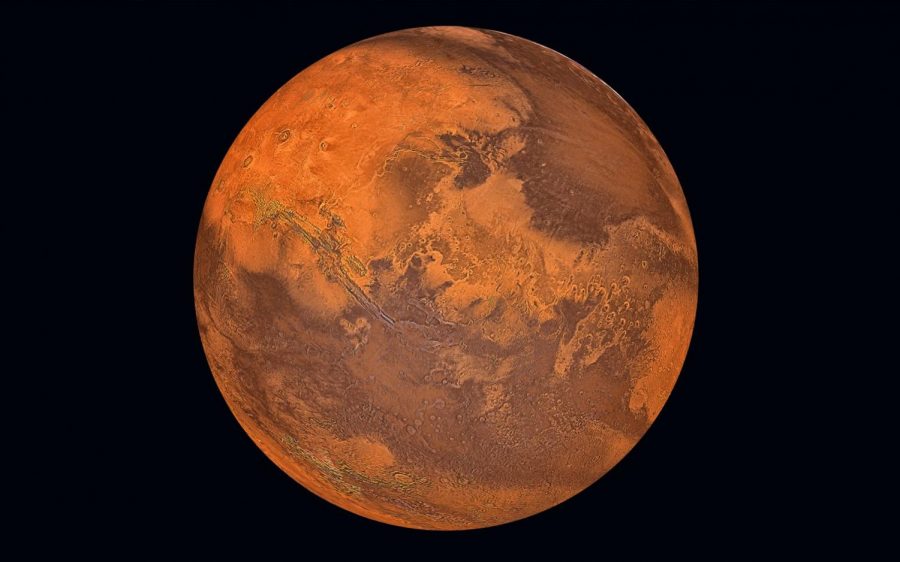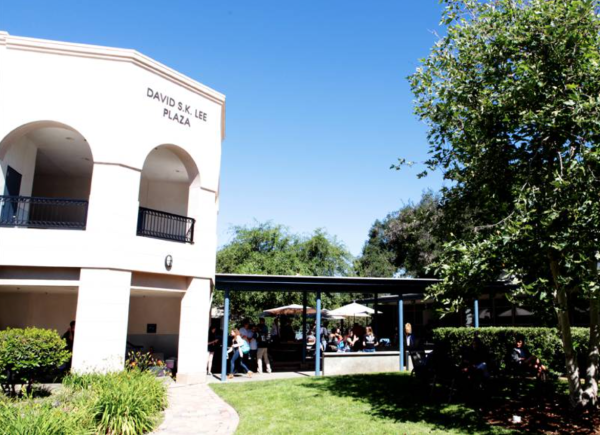Searching Space for Habitable Planets
Photo courtesy Getty Images
Some of the most intriguing places are those shrouded in mystery. Looking up into the sky, past the stratosphere, and into space, Earth is a minuscule dot amongst the trillions of stars that populate the cosmic realm. Orbiting these stars are a plethora of diverse and unique planets – but a scarce few contain the conditions and resources necessary for humans to survive. Humankind has wrought destruction to Earth, plundering precious natural resources and poisoning the air and water with chemicals. A crossroads is fast approaching: adapt to the imminent and irreversible changes to the environment or colonize another planet.
The process through which humans can change other planets to become habitable is called terraforming. In order to identify planets with favorable conditions for this process, scientists use gamma-ray telescopes which utilize light radiating from a planet (or lack thereof) to determine their molecular composition. This enables scientists to identify the types of molecules and elements found on a planet as well as to evaluate its atmosphere. Of the planets suitable for terraforming, none are remotely close to Earth.
The great challenge that prevents humans from reaching these faraway planets is the formidable distance between Earth and prospective planets. Current technology is not sufficiently advanced to send humans or probes to these planets in spaceships. For example, Kepler 452b, a planet dubbed “Earth 2” due to its similar composition, is the first of its kind with an almost identical habitat as Earth. However, this planet is just over 1,400 light-years away, equivalent to 8.2 quadrillion miles. Traveling in our fastest shuttle, it would take 26 million years for humans to reach it. As a result, scientists have been forced to take a closer look at places that are more accessible, primarily our neighbors, Mars and the moon.
While the moon remains the only landmass in space where humans have landed, we must consider whether it could sustain life. A celestial body’s atmosphere plays a significant role in determining whether it can be terraformed. The moon’s atmosphere is comprised of hydrogen, neon, and helium. Over millions of years, the solar winds have dispersed these particles into space, resulting in a weak atmosphere. Therefore, the moon is susceptible to a variety of galactic dangers such as solar flares, winds, radiation, and meteors. The consequences of these conditions are apparent in the moon’s surface, which is riddled with craters and ravaged by solar wind. These perils are not present on the Earth due to the strong atmosphere and magnetic field that encompasses the globe. Recently in 2020, NASA confirmed the existence of water on both the sunlight and dark portions of the moon. However, the amount of water on the moon is 100 times less than the amount the Saharan Desert holds per cubic meter. This would not be sufficient for human survival. The composition of the soil is another relevant consideration of terraforming. Lunar soil is not viable for terraforming and would be virtually impossible to grow food in due to the presence of meteor fragments, volcanic glass, and lack of nutrients needed to grow food. With these mitigating factors, terraforming the moon is an improbable reality.
Zooming through space, 140 million miles away from the moon, is Earth’s neighboring planet, Mars. The red planet is less explored than the moon with only probes having visited; however, this planet is at the forefront of current investigations to determine whether Mars is habitable. Iron oxide covering the planet gives it its defining red hue. The surface is home to volcanoes, rocky peaks and ridges, and a massive canyon which makes the Grand Canyon seem minuscule in comparison. Mars’ atmosphere is in large part responsible for its current status as the most viable option for terraforming. Mars’s atmosphere is weak due to its high density of carbon dioxide molecules, once again making it subject to many of the same galactic dangers that affect the moon. The weak atmosphere also contributes to severe temperatures, ranging from negative 195 to 70 degrees Fahrenheit. While these may seem extreme, the temperatures are much more similar to Earth’s as compared to the moon’s. Ice is common in the Martian landscape, as the low atmospheric pressure prevents water from melting into a liquid state. In fact, dry riverbeds and lakes on Mars dating back millions of years prove there used to be running water on the planet. This could only happen if Mars had a strong atmosphere, which scientists hypothesize has since been desecrated over millions of years by solar winds. In terms of soil composition, Mars soil has many nutrients necessary for growing crops such as iron oxide and phosphorus. With water, sunlight, and a regulated greenhouse on Mars, growing plants and food could become a distinct possibility. Mankind is a long way off from colonizing Mars, but that has not served as a deterrent to launching rovers and satellites to study the planet.
The Mars rover, Perseverance, launched a little less than a month before the start of school. Seven months later, the rover’s heatshield grew hot as it entered the atmosphere before deploying its parachute and safely landing with the help of rockets. This endeavor cost 2.7 billion dollars, of which three quarters was dedicated to the construction of the rover. The objective of Perseverance is to investigate traces of ancient life and take rock samples. Perseverance landed in the Jezero Crater as signs suggest this desolate crater was once a lake and may have held microbial life. It has been over a month since the landing and Perseverance has been taking soil and rock samples of Mars. In addition, the rover has been transmitting high-quality images of the Martian landscape. Scientists will hold off conducting major experiments using the rover’s implements for the time being as they run diagnostics and tests on the various equipment. Their current goal is to move the Rover from its current landing location to a nearby riverbed, which if anywhere, has the greatest likelihood of showing past remains of life. Along with the rover, NASA constructed a four-pound helicopter, dubbed Ingenuity. Once a good helipad has been found, Perseverance will deploy Ingenuity. The helicopter will be left to charge using the sunlight before embarking on 6 test flights over the next month. Only after this, will Perseverance begin conducting experiments using its full plethora of equipment.
In the future of space exploration, while the moon has only a slight potential for terraforming, it is but a step in the overall vision of colonizing space. The moon landing has always been a shining milestone of mankind’s technological advancement and continues to be an important milestone in space exploration. Mars, on the other hand, represents the next step into the future. Mars has a greater possibility for providing a place to colonize with its slightly stronger atmosphere, amount of water in the form of ice, and possibly fertile soil. With multiple countries vying to put the first man on Mars, everyone must stop to think about which endeavor would be more beneficial. As of now both the cost and time it takes to send astronauts and satellites into space prohibits the launch of multiple explorations. As space exploration rises in popularity, so do government funding and private investments. NASA has partnered with the European Space Agency for a multi-mission project. The goal: to send a spacecraft to Mars to bring back samples Perseverance has collected. In addition, NASA hopes to send astronauts to the moon by 2024 and set up a permanent moon base by 2028. China is also ramping up space expeditions, having increased its spending on space exploration by 349% in the past fifteen years. This year, China has forty space launches planned. Only 64 years after mankind’s first launch into space, technology is becoming rapidly more advanced, allowing for more extensive research to be done. Some books such as The War of the Worlds warn that space is a place of danger for mankind due to our lack of knowledge. However, as the Earth’s resources are slowly depleted, perhaps space will be our next salvation.
Sources:
Mars 2020 Perseverance Rover – NASA Mars
Kepler-452b | extrasolar planet
Can Plants Grow with Mars Soil?
These Countries Are Investing the Most Money in Space Programs

Grade: 12
Years on Staff: 4
Why are you writing for the Flintridge Press?
Everyone has a voice. At the Flintridge Press, we strive to cultivate...











